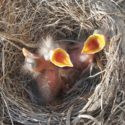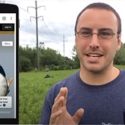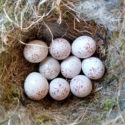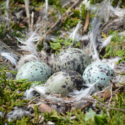 Photo ©
Keith Williams
Photo ©
Keith Williams

Big Goals, Many Helpers
Big things are happening at Nest Quest Go!, our sister project. Our biggest species set to date—American Robins—is 89% complete. Can you spare a few minutes to transcribe historic nest records for science? These 18,590 records will be uploaded into our NestWatch database, so if you’re looking for ways to contribute, hop over and spend a few minutes to help get this massive project across the finish line. With many helping hands, we should be done with the American Robin set very soon!
You can also check out our Flycatchers set while you’re there and learn about these harder-to-find nesting birds. Multiple species are aggregated in this set, so you can learn about different species of flycatchers while you’re at it.

Go On A Virtual Nest Check
Have you been wondering what nest monitoring involves? Are you concerned about doing it correctly? Then check out our new video, hosted by Leo Sack of the Cornell Lab of Ornithology Visitor Center. Leo shows you how to conduct a nest check and walks viewers through a brief introduction to the NestWatch mobile app for reporting data. Follow along as he checks a Tree Swallow nest in beautiful Sapsucker Woods in Ithaca, NY. Watch the short video here.

Watch Our Archived Webinar
On June 18, NestWatch staff held a “Nest Talk with NestWatch” online program. If you didn’t catch it, you can watch now on Facebook. You do not need to have a Facebook account to watch the video.

Working For Wildlife
As companies slowly reopen and work to make their facilities safe for their staff, they can also consider making their properties safer for wildlife. In our new blog post, we highlight some certified wildlife habitats on business campuses as examples of good stewardship which benefit both people and planet. The Wildlife Habitat Council is a nonprofit organization that helps businesses take action to provide habitat, conserve native species, and inform the public about these efforts. Read about the impact of these certified properties in our latest blog post.